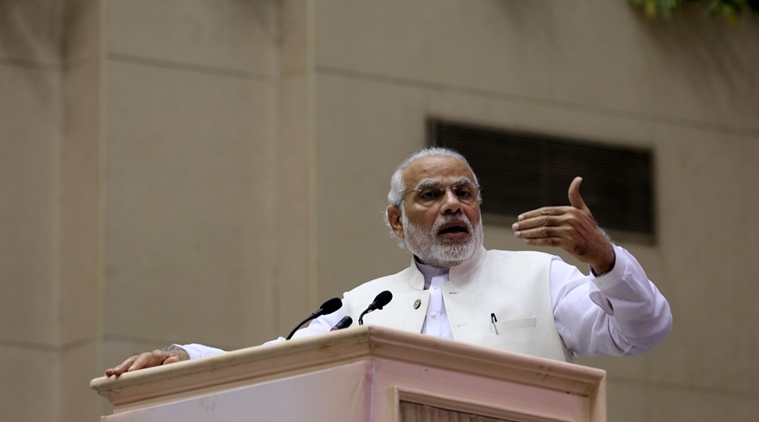India, US and a five-point plan

The Indian Express | 24 June 2017
India, US and a five-point plan
by Mukesh Aghi
Prime Minister Narendra Modi’s visit to Washington D.C. comes at an inflection point in the history of US-India ties. Modi’s approval ratings are at an all-time high and he is enjoying the afterglow of his win in the recent state elections. The Trump administration will likely focus on US job creation, pursuit of “free and fair” trade, and national security collaboration. There are five commercial and strategic priorities that will continue to be the pillars of the US-India partnership which both governments should consider.
Building a forward-looking trade agenda
India’s trade posture has been evolving rapidly since 1991 and further accelerated since PM Modi came to office. The government has cast a wide net on liberalisation to increase FDI inflows. Overall, the message is clear: India is open for business. Although some protectionist measures remain in India, these issues are ripe for negotiation at the bilateral dialogues such as the Trade Policy Forum and the US-India Strategic and Commercial Dialogue.
Of course, even within the framework of these dialogues, the two countries will need to move past obvious headwinds such as India’s IP standards and the immigration executive orders affecting high-skilled workers in the US. On the face of it, “America First” and “Make in India” are not natural points of convergence, but they need not be matters of conflict either — only if both countries avoid protectionist measures. Since the Trump administration is keen on bilateral treaties instead of multilateral trade deals, it may be a tangible outcome if the two governments set their goals on negotiating a bilateral investment treaty.
Secondly, the countries could establish a high-level Economic Opportunities Group to identify and address barriers to trade and investment. This group would report to the PM and president and would be co-chaired at the Cabinet level for periodic reviews.
US-India defence partnership
In August 2016, the Government of India finalised the Logistics Exchange Memorandum of Agreement (LEMOA). For its part, the US government recognised India as “Major Defense Partner”. This will bring our militaries and industries even closer and comes on top of the 10-year defence framework agreed to last year. The US government should make it a priority to highlight India’s status as a major defence partner.
India is undergoing a process of military modernisation and could choose to procure defence equipment produced in the US. US companies have seen sales grow from $300 million to over $15 billion in about 11 years. Further defence equipment sales to India could help reduce the US-India trade deficit and improve the US’s defence-industrial manufacturing base.
Reinvigorate a US-India agriculture dialogue
The aim of a high-level agriculture dialogue would be to reduce barriers and can be part of a streamlined US-India Strategic and Commercial Dialogue or combined with the US-India Trade Policy Forum. The US and India could create parliamentary exchanges among representatives from high agriculture production areas, establish scientific exchanges, and share best practices in food safety and nutrition. India could also announce its intent to liberalise the food retail sector to permit the limited sale of non-food items to attract investments from US companies.
Create an energy trade and technology initiative
The purpose of this initiative would be to underscore the importance of growing US energy exports to meet India’s high demand. The initiative would also increase industry participation in bilateral dialogues for energy collaboration; announce a trade mission led by US energy companies that aims to boost US exports and job creation stemming from new exports in the energy field. The Indian government should also implement a commercial mining framework to enable US companies to invest in the sector.
Building cooperation on health security
Both India and the US should reaffirm their commitment to global health security with emphasis on sharing best practices and technology, and a recognition of the role the private sector can play. They should work together on improving India’s implementation of its IPR policy and addressing specific areas of contention such as Section 3(d) under the Patent Act. Moreover, the announcement this year by the Ministry of Health (MoH) and the Department of Pharmaceuticals to bring coronary stents under price controls has had negative consequences for the government’s goals on healthcare. Instead, the MoH could come up with a differentiation matrix to classify the vast varieties for coronary stents and not treat all of them the same way.
The evolution of global geopolitics has led to an unprecedented convergence between the US and India. The commercial imperative for closer ties is clear for American companies seeking to do business in the fastest growing large economy in the world. On the flipside, India’s strength in the services sector provides US companies with a deep competitive edge. Divisive political sentiments can be overcome as Indian companies make it their mandate to hire locally in the US.
The strategic imperative for a deeper cooperation between the two countries is indisputable: China’s military build-up and its assertive posture in the Indo-Pacific, the need to address regional security threats in South Asia, and increasing cyber security challenges. The list of common challenges and shared opportunities is long. We urge both governments to seize the moment.





